What is a Universal Product Code (UPC)?
There are plenty of different acronyms that you need to know when you’re starting out in eCommerce. When you’re looking at product codes, there are loads to get your head around. When it comes to UPCs, SKUs, GTINs and ASINs, they’re not all interchangeable, and you need to know the difference so as to not use the wrong number in the wrong place in your inventory, or order management systems.
What is a UPC?
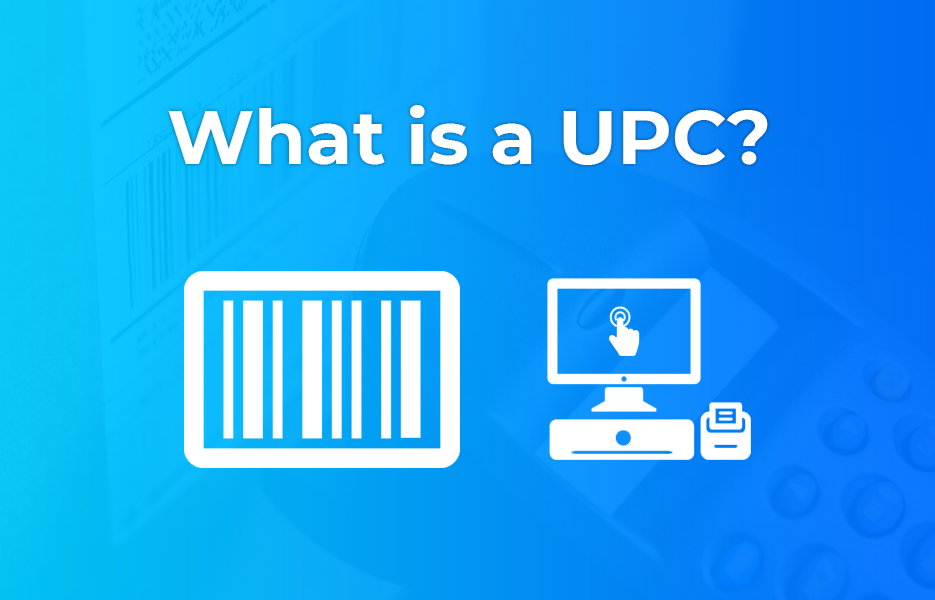
A UPC is a Universal Product Code. It’s made up of two parts – a 12-digit number and a machine-readable barcode. The code is made up of numbers based on the company’s manufacturer ID number, the item number and a check digit – the check digit is simply there to help barcode scanners to know that the UPC is correct and valid.
Initially created for grocery retailers, in order to help make the checkout process more accurate and efficient. UPCs can help businesses to keep on top of their inventory, as well as identifying features of items – for example, with brand names, sizes, colours, style, department and so on. They can also be used for assigning and maintaining correct pricing on EPOS (Electronic Point Of Sale) systems throughout the business, whether the business is just one outlet, nationwide or international.
For businesses that are looking to become more efficient, the use of barcode scanners in warehouses are invaluable – especially when used in conjunction with EPOS and inventory management systems.
In terms of customer service, UPCs can help customers trace their product and to know that they have an authentic product. If there happens to be a situation where a batch of items needs to be recalled urgently, the UPC can be useful, as it allows suppliers to identify which retailers had sold those items, but beyond that, it allows the retailers to identify the customers who bought the items. Once the customers have been identified, they can be contacted and the products recalled more efficiently.
Where do I get UPCs from?
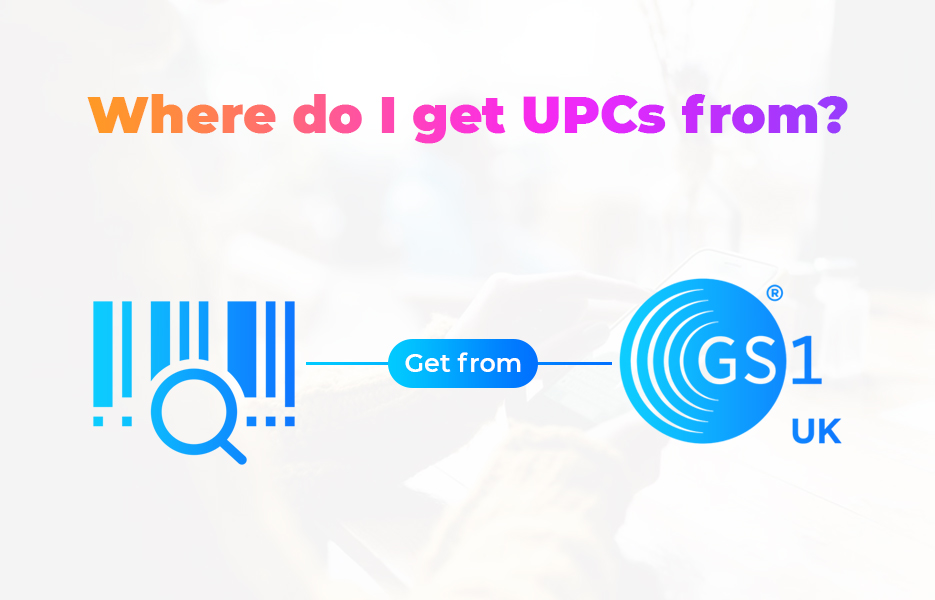
Official UPCs can be purchased from GS1 UK. To be able to buy UPCs, you’ll need to register your company with the Global Standards Organisation (GS1). You’ll pay a fee to join, and have your business officially recognised. Then you’ll be issued a six digit manufacturer identification number, and every UPC that is issued for your company subsequently will start with that six digit number.
The next five numbers are the item number – they identify the product. Businesses manage these, and they are responsible for issuing numbers for each unique product. It is essential that businesses issue codes accurately, since for every product variation (such as size, colour, length etc) there needs to be a separate item number.
I’ve found UPC codes cheaper elsewhere – can I use those?
There are companies online that offer barcodes and numbers for sale at far lower rates than GS1 do. But you need to be aware that these companies are not part of the GS1 network, and most of those businesses purporting to sell official barcodes are not authorised to do so. Therefore, if you buy barcodes from elsewhere online, you may find they are not unique, or you might find they aren’t recognised by your barcode readers.
It’s not really worth the risk, especially if you’re using UPCs for your products on marketplaces. Using unauthorised UPCs can be costly too, since using them may result in having your listings rejected or removed, and for repeat offenders, having your seller accounts closed – which can be nearly impossible to have the decision reversed on.
How much does a UPC cost?
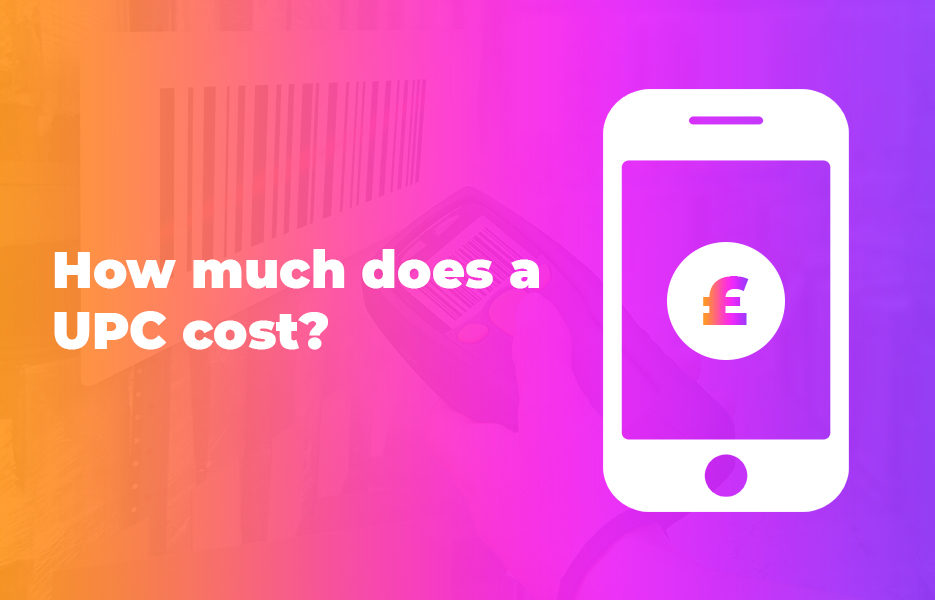
Like many services provided for businesses, the answer to the cost of UPCs is ‘it depends’. For companies with turnover of less than £0.50 million that need less than 1,000 numbers, license fees are £119 + VAT, and prices grow incrementally. Where companies have a turnover of more than £1bn, and need more than 100,000 numbers, costs are £3,280 + VAT. You can learn more about UPC pricing on this page.
Is a UPC the same as a SKU?
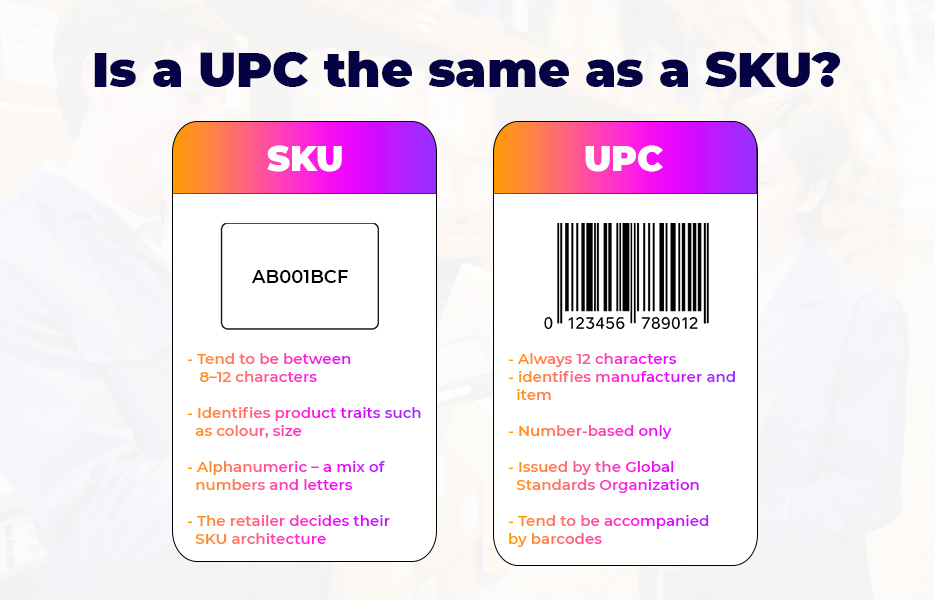
No. A UPC can be used for a product in many businesses worldwide, whereas a SKU is set by a business for internal use only.
Because SKUs are set depending on the needs of the business, they can differ wildly from business to business – from the characters they are made up of, to the parameters set by an inventory management system. UPCs are universal, so will remain the same whichever business they are being used by.
Characteristics of SKUs
- Tend to be between 8–12 characters
- Identifies product traits such as colour, size
- Alphanumeric – a mix of numbers and letters
- The retailer decides their SKU architecture
- Can be accompanied by a barcode
Characteristics of UPCs
- Always 12 characters
- Identifies manufacturer and item
- Number-based only
- Issued by the Global Standards Organization
- Tend to be accompanied by barcodes
Can you use a UPC as a SKU?
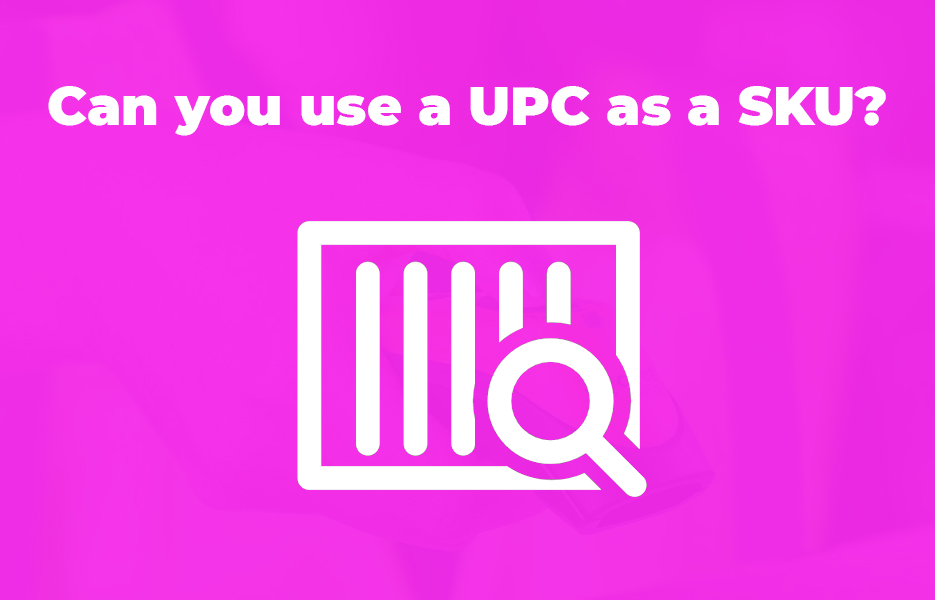
You can, but for most retailers, it isn’t logical to do so. Your SKU helps you identify features of a product, whereas the UPC will identify the manufacturer. If you have several suppliers for the same item – for example ‘baby blue fleece cot blanket, 120cm x 120cm’ – then your suppliers are likely to have separate UPCs, but each product is essentially the same, it makes sense for you to use the same SKU. In this case, using the UPC would inconvenience you, since your listings would need updating each time you switched to a different supplier.
Other product codes sellers need to know
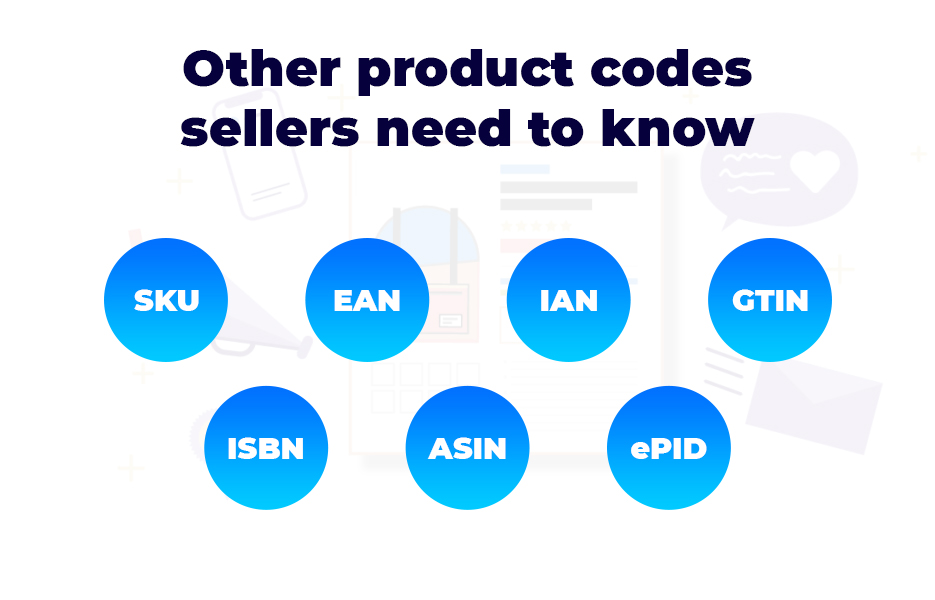
SKU is the Stock Keeping Unit. This code is generally produced by sellers to help them keep control of their products, and they’re usually unique to a business. You don’t generally find the same SKU being used between different companies, since each business will have different requirements for their SKUs, depending on warehouse space, inventory management tools and so on.
EAN is a European Article Number. Like UPCs, EANs are issued by GS1 and they’re issued to unique products. As GS1 issues the number, they also issue a barcode for use on each instance of that particular product. EAN codes are used worldwide, with the exception of North America.
IAN is the International Article Number, which refers to the same codes as EANs.
GTIN is Global Trade Item Number, and is the collective name for all the types of codes issued by GS1. They include the UPC, the EAN/IAN and the GTIN-14.
ISBN is the International Standard Book Number. The ISBN only applies to books, so if you don’t have books in your inventory, you won’t need to worry about this.
ASINs are Amazon Standard Identification Numbers, and they are 10 character alphanumeric codes that Amazon creates for each product in their catalogue.
ePID stands for eBay Product Identifier. It’s a code for eBay to identify their products, and (to our knowledge) there aren’t any other marketplaces using ePIDs.
Why are UPCs important for sellers that are DropShipping?
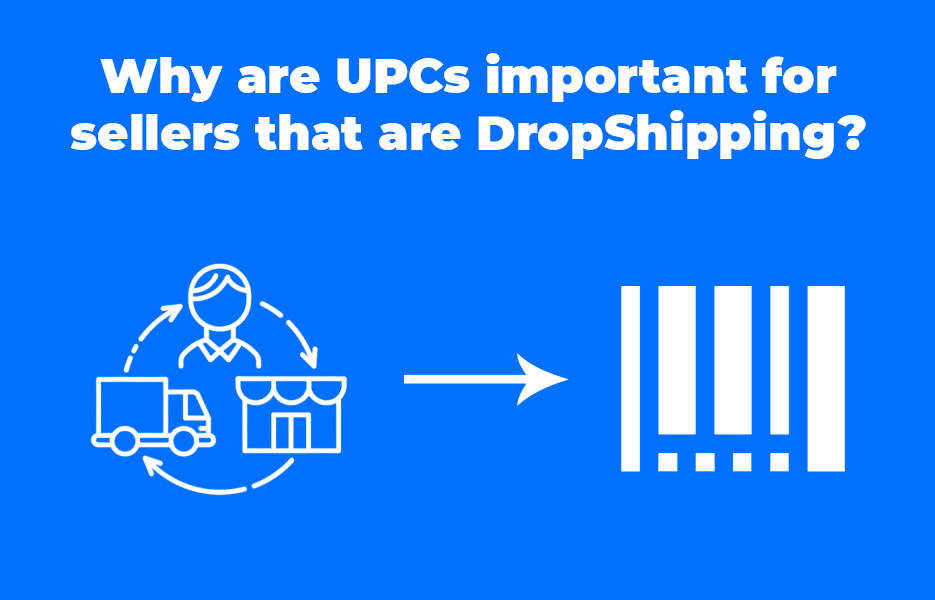
We talked about the value of using SKUs when you’re DropShipping in this post previously. Many of the reasons that SKUs are useful apply to UPCs too.
- Keeping UPC information can help you be more accurate with your records
- If you’re looking for more products to sell and you can identify a manufacturer that your customers are demanding products from, the UPC can help you find suppliers
- UPCs can help you with your reporting – for example, if you had returns of a certain product
- You can assist customers who want the same product more than once, even if you have stopped selling the item in question – because you can give them the manufacturer information
- Marketplaces such as Amazon demand UPCs, so without it you may not be able to sell your items
If you’re DropShipping and you have a traditional retail outlet, UPC information in your reporting tools can help you to identify the products that are likely to be successful for you in store.
While there are a lot of different acronyms in eCommerce (and retail generally), once you’ve got your head around them all, you’re likely to find that most of them are pretty useful for your business. UPCs can help you to keep track of where your products are from, and if you’re keeping stock in a warehouse rather than DropShipping, can also help you to maintain accurate stock counts.
Key points to remember about UPCs specifically include:
- A UPC is made up of a 12-digit number and a barcode
- UPCs apply to one product across all businesses
- UPCs help retailers to keep track of inventory and to operate more efficiently
- For most businesses, it’s unwise to use a UPC in place of a SKU
- Purchase official UPCs from GS1 – buying from third-party, unauthorised UPC suppliers could end up costing you more in the long run
When you’re listing products from different suppliers on your chosen marketplaces – and especially when you’re DropShipping, having the UPC will assure that items are not fake. Providing the UPC information can help to minimise the risk of negative reviews, especially where doubt has been cast about the legitimacy of a product.

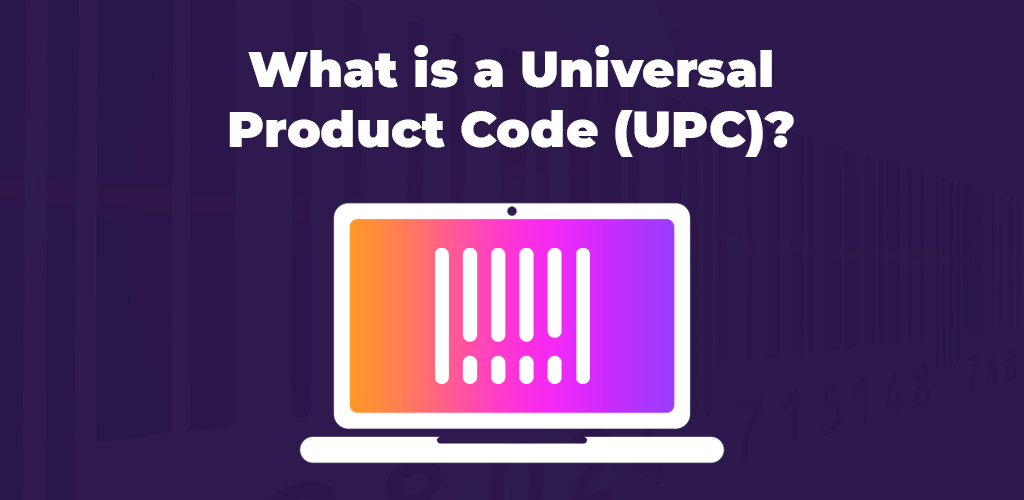


DropShip products from verified suppliers to diversify your inventory and scale your eCommerce business